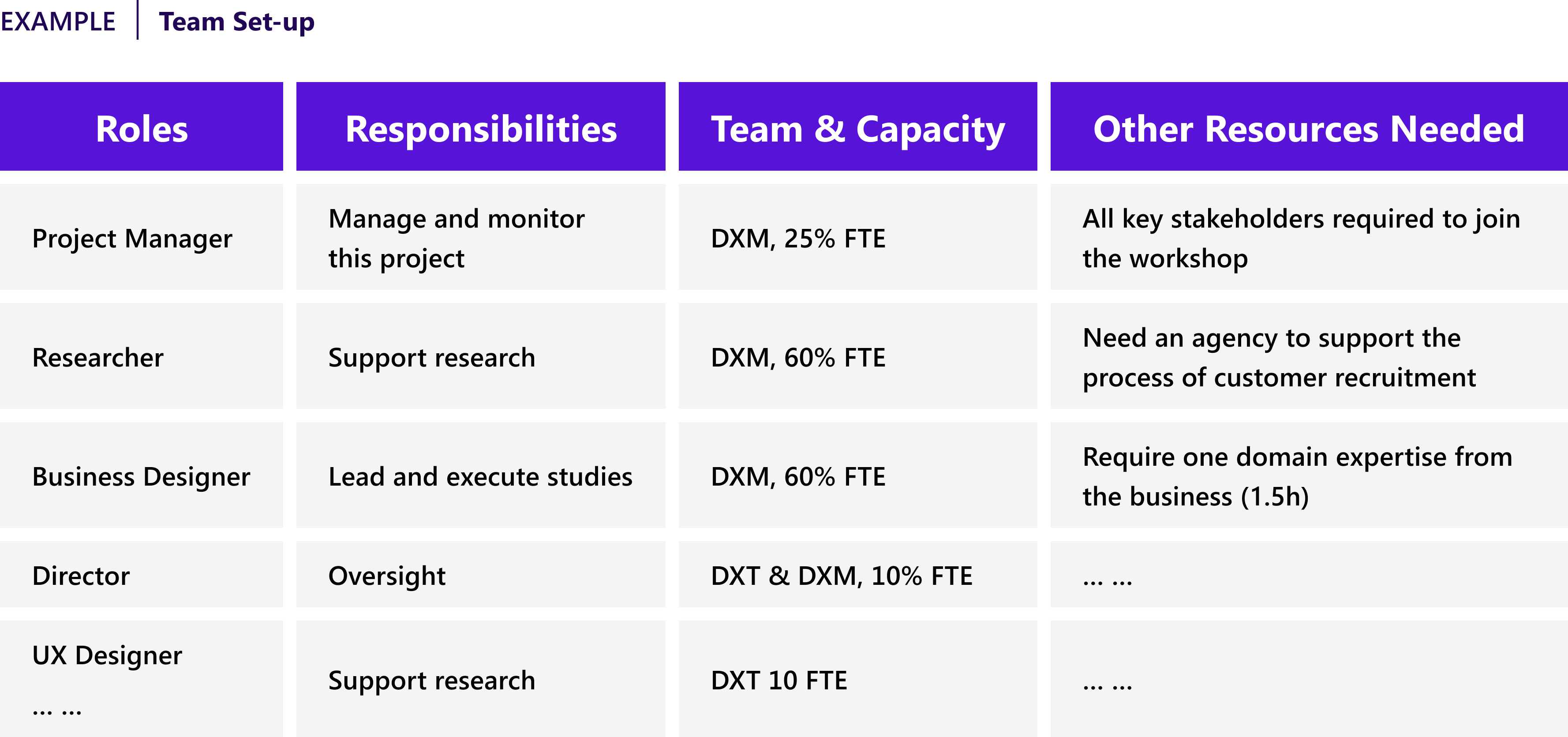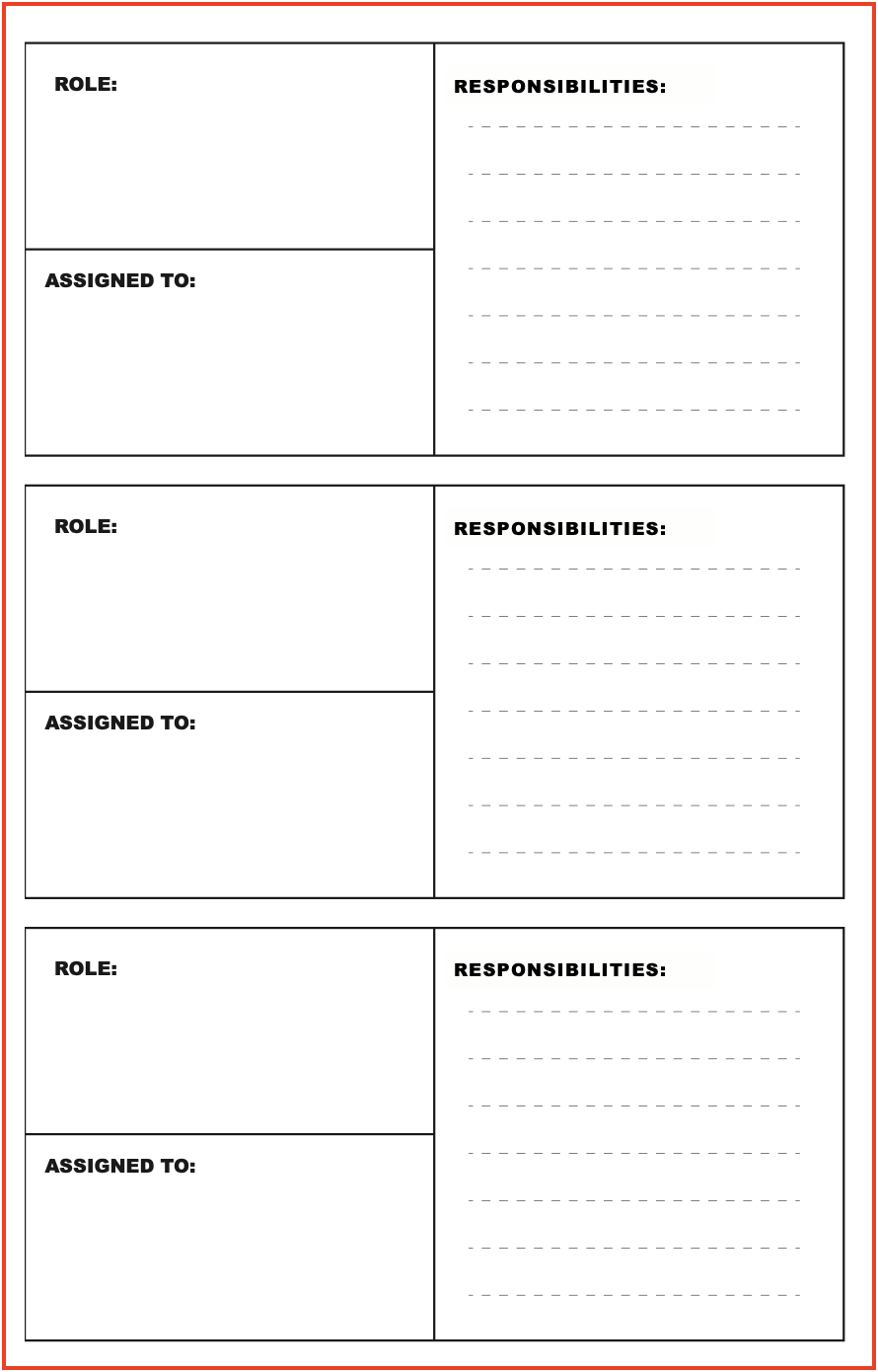¶ Team Set-up
Before starting the process, we must properly set up the whole team and map out the resources, skills, and expertise we might need. Meanwhile, we should ensure the required team members have the capacity and willingness to join this endeavour.
Roles and responsibilities are also drafted out to give a good overview of who and what is needed during the process.
After the team is set, we can move to team building and help the team members to understand their roles and goals.

¶ Team Building
Understanding the skills and motivation of your team members to create a strong team will lead to excellent high performance.
¶ Step One
Share who you are
Spend time as a team getting to know each other. Make this a casual and friendly experience. Give everyone a few minutes to write down their skills and share them back with the team.
Define your individual and team goals
Talk about the ambitions of each person. Please continue to write them down and post them on the wall. Find out about your shared goals. Match skills and passion with what your challenge requires.
Agree on roles
Define each person’s role. Consider letting your team member self-identify what they can contribute. Keep a visual reminder of your conversations by taking notes.
Give feedback
Revisit the agreement made on your team structure. Look at the core members of your team and determine what they could be better at and not so good at. Then, support each other by giving constructive feedback about everyone’s contribution.
Tip
If all team members know each other very well, we can skip some steps, jump to step two, deep dive, and align on the responsibility directly.

A team is stronger than any individual. Two heads are better than one! Having a group of people who bring in different elements, strengths and perspectives will enable you to solve complex challenges.
¶ Step Two
Form a team
A team will work best if it consists of a core group of two to five individuals. Smaller sizes teams make it easier to coordinate schedules and make decisions. Larger teams have more capabilities but might move slower.
Identify your roles
Complete the table in the template by assigning each team member's roles and responsibilities.
Define your roles
Define each person’s role. Consider letting your team members self-identify how they want to contribute.
Tip
Let your team members identify their roles first and write down what they think their responsibilities are before re-alignment.

¶ Team Building Resources
¶ Useful Tips
¶ Stakeholder Involvement
Apart from defining the right Problem Statement and developing customer-centric solutions, your project's success heavily depends on stakeholders' involvement and buy-in. Make sure to keep stakeholders in the loop and update them about the progress of your journey regularly. This avoids confusion, surprises, and dissatisfaction at the end!
Setting up a successful project team:
- Team composition: Who is part of the project team? Should directors or decision-makers be present?
- Roles and responsibilities: Who is responsible for which tasks in the team? Which value does each team member bring, and which skills are crucial?
- Key objectives: What are the priorities of the stakeholders? Which milestones should be reached?
- Alignment of values: Which values and ways of working does each team member have? Are different habits compatible, and can you agree on project rules and conditions?
Possible channels for stakeholder communication:
- Weekly Project Updates - Bring together the project team and update them on each other’s progress.
- Weekly Status Reporting - Bring together an executive summary, key highlights, blockers, risks & issues resulting from past work. Then, plan for the upcoming week of work in a structured one-pager.
- Monthly SteerCo - Bring together primary stakeholders to review/assess progress.
- End of Phase ExCo - Bring together key stakeholders at the Executive level to approve work to progress to the subsequent phase.